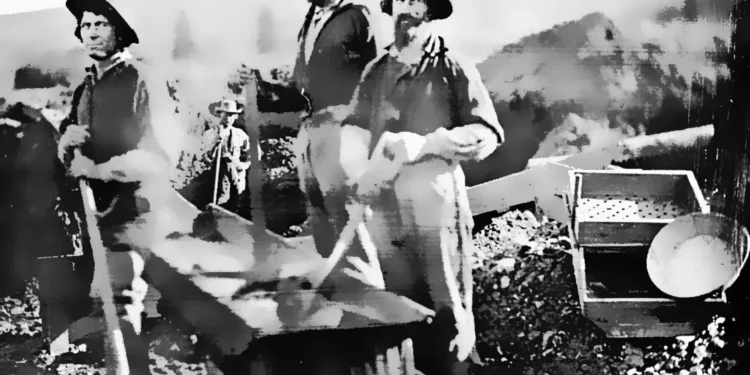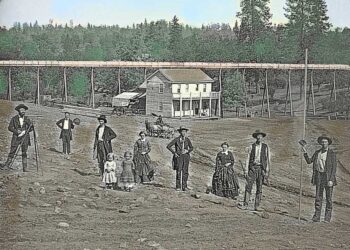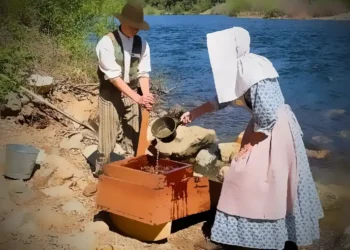PLACERVILLE, Calif. — By Cris Alarcon, InEDC Writer. (June 11, 2025)
Before it was a name on the map, Placerville was a promise—of gold, opportunity, and reinvention. Just ten miles from where James Marshall’s discovery at Sutter’s Mill triggered the California Gold Rush in January 1848, the town began as “Old Dry Diggins.” Within months, its ravines and creeks revealed shimmering wealth, and with fortune came folklore.
By 1849, following a notorious triple hanging of outlaws convicted of robbery and murder, the camp took on a new name: Hangtown. The executions were carried out beneath a large oak tree on Main Street, a tree that would later be hidden beneath the floor of a saloon—a haunting legacy immortalized today by a hanging mannequin and the Hangman’s Tree Ice Cream Saloon.
Placerville’s turbulent start was followed by decades of evolution. As the gold began to dwindle, the town pivoted from mining to logistics, becoming a supply hub for nearby camps and, later, a passage point for silver on the Comstock Trail.
Incorporated on May 13, 1854, Placerville chose to cast off its grim nickname and adopt its current moniker. Still, Hangtown Creek runs through the center of town, a quiet reminder of its roots.
“The people of Placerville didn’t just strike gold—they forged a community that could outlast it,”
said local historian Susan Hill, curator of the Fountain & Tallman Museum.
“Fire, floods, boom, and bust—none of it broke this town.”
Placerville suffered through multiple devastating fires in the mid-1850s, yet rebounded with remarkable resilience. The county seat moved here in 1857, reinforcing the city’s status as a political and logistical powerhouse. By 1859, miners headed east for Nevada’s Comstock Lode, and Placerville became the final supply point before braving the mountains.
When the Pony Express galloped through in the early 1860s, Placerville served as a key relay station. Despite the service’s short life, it further established the city as a vital link in the westward expansion.
By the 1880s, Placerville had stabilized. Almost 2,000 residents filled its churches and read its three newspapers. The arrival of the Sacramento-Placerville railroad in 1888 was met with cannon fire and cheers. As a speaker at the time declared, it was the joining of the “King of the Valley” with the “Queen of the Mountains.”
Economic renewal followed. The British bought dormant mines in 1889, reinvigorating industry. Floods in 1896 revealed new gold, sending hopefuls to pan in the ditches and roadsides, as they had a generation before.
Placerville is also home to legends. John M. Studebaker, once known as “Wheelbarrow Johnny,” earned his first fortune making mining equipment before founding the famous vehicle company. His legacy rolls on each year with the Studebaker Wheelbarrow Races at the county fair.
The city has preserved its heritage through local landmarks like the Gold Bug Mine—a now-public park with guided mine tours and restored blacksmith shops—and the Fountain & Tallman Museum, housed in a stone soda works built in 1852.
And then there’s the Hangtown Fry, the rich-man’s omelet of oysters, bacon, and eggs, allegedly born in celebration of a lucky gold strike. You can still order one in town.
In Placerville, every brick, every trail, and every stubborn oak stump whispers of a past both glorious and gritty. The gold may have moved on, but the heart of Hangtown beats on—stronger than ever.










